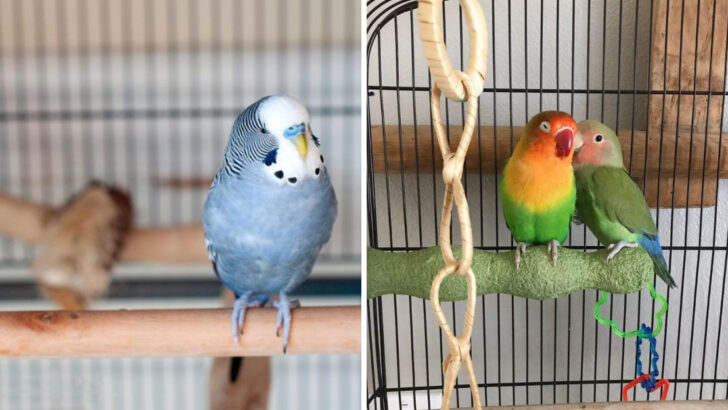They may both be small, colorful, and full of sass—but budgerigars and lovebirds are not the same bird in different feathers.
One is a chatterbox with a love for acrobatics.
The other is a cuddly whirlwind of energy and fierce loyalty.
Put them in the same cage without knowing the difference, and you might witness a tiny feathered soap opera unfold before your eyes.
From attitude to volume, and from social quirks to solo habits, these two popular pets have wildly different personalities hiding behind their bright plumage.
If you’ve ever wondered which bird suits your lifestyle—or if you’re just here for the drama—get ready.
Because the differences between budgies and lovebirds go way beyond beak size and wing flaps.
Let’s pull back the curtain on these tiny divas of the avian world.
Feathers may fly.
Size and Appearance

A striking distinction between budgerigars and lovebirds is their size. Budgerigars, often affectionately called ‘budgies,’ are generally smaller and slimmer. Their sleek build is complemented by a long tail, creating an elongated appearance.
In contrast, lovebirds possess a stout build, with a more robust body and a shorter tail. This gives lovebirds a compact and sturdy look, often described as ‘plump.’ Their vibrant colors add to their charming demeanor, making them visually appealing.
These differences in size and appearance are easily noticeable and contribute to the unique visual identity of each bird.
Social Behavior
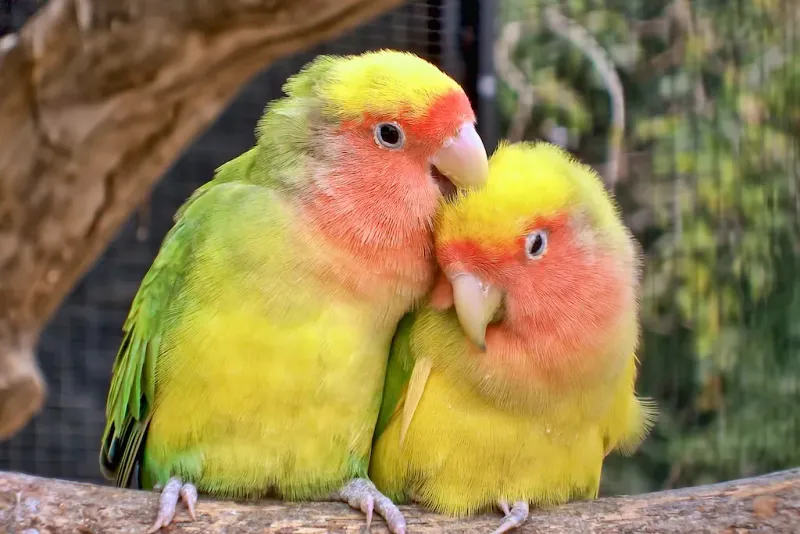
Budgerigars are often sociable, thriving in flocks and enjoying the company of others. They are known for their playful antics and chattiness, often chirping away happily in groups.
Lovebirds, true to their name, are known for forming strong pair bonds. They tend to focus their attention on a single mate, exhibiting affectionate behaviors that can be deeply touching.
While budgerigars may flutter about in larger social circles, lovebirds often showcase a more intimate social dynamic, highlighting their deep bond with a chosen companion.
Vocal Abilities
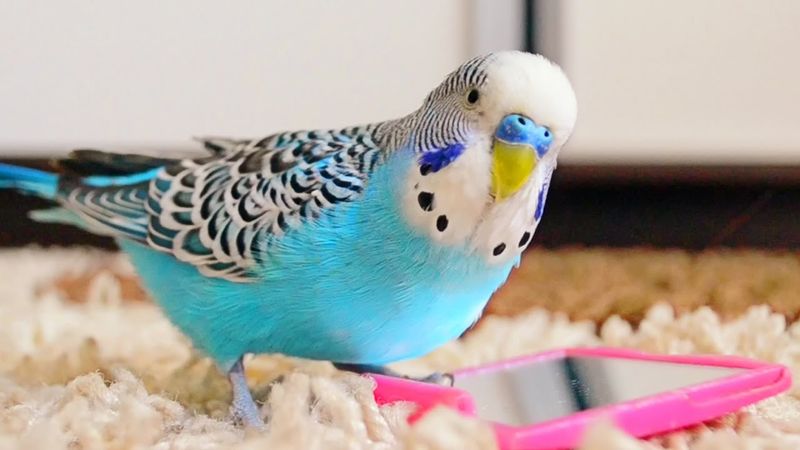
Budgerigars are renowned for their ability to mimic human speech. Their vocal prowess makes them fascinating companions, as they often learn words and phrases, engaging in charming conversations.
Conversely, lovebirds are not known for their talking ability. While they can be vocal, their sounds are more about chirps and whistles than mimicking speech.
This vocal difference adds an intriguing layer to choosing between these birds, as budgerigars offer the potential for engaging dialogue, while lovebirds provide a more natural and musical soundscape.
Diet Preferences
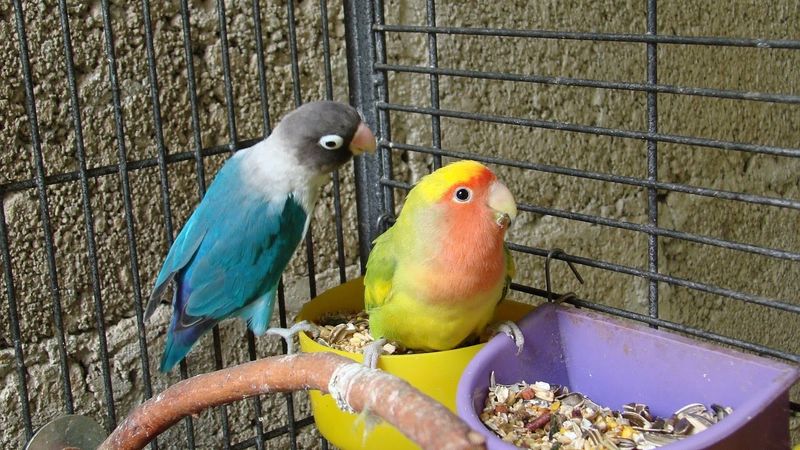
Both budgerigars and lovebirds enjoy a staple diet of seeds and pellets, yet their dietary needs showcase subtle differences. Budgerigars thrive on a diet that is rich in millet and canary seeds, reflecting their natural foraging habits.
Lovebirds, however, require a diet supplemented with more fresh fruits and vegetables. Their dietary preferences lean towards a more diverse array of nutrients to keep them healthy.
Understanding these dietary nuances is essential for providing optimal care, ensuring each bird receives the appropriate nutrition tailored to their specific needs.
Lifespan and Longevity
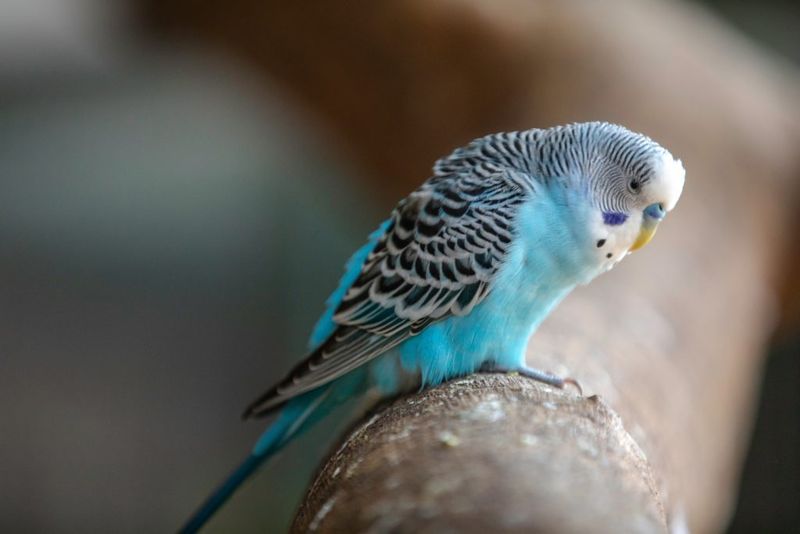
The lifespan of budgerigars is generally shorter, averaging around 5 to 10 years. These petite birds live a vibrant but relatively brief life, often bringing joy in a compact timeframe.
Lovebirds, on the other hand, enjoy a longer lifespan, living up to 15 years or more with proper care. Their extended years offer companionship that can last for a significant period.
For prospective bird owners, understanding these lifespan differences is crucial, as it helps set expectations for the duration of companionship each bird can offer.
Origin and Habitat
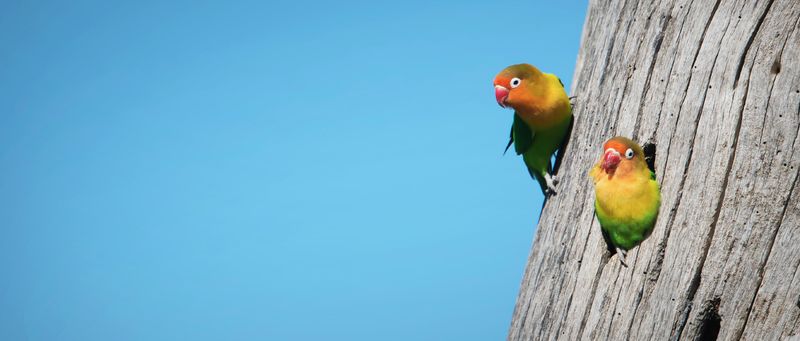
Budgerigars originate from the vast plains of Australia, where they are seen flitting about in wild flocks. Their adaptation to this environment makes them hardy birds that thrive in various conditions.
Lovebirds hail from Africa, inhabiting regions that range from arid savannas to lush forests. This diverse habitat background influences their resilience and behavior.
Their distinct geographical origins provide insights into their natural preferences and behaviors, offering a glimpse into the environmental factors that have shaped their evolution as species.
Color Variations
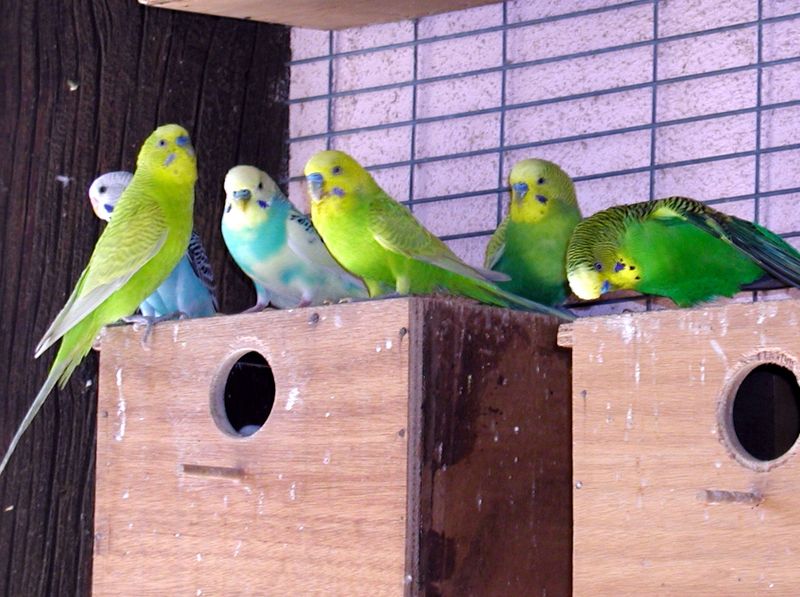
The color spectrum of budgerigars is vast, with hues ranging from greens and yellows to blues and whites. This variety stems from years of selective breeding, providing a kaleidoscope of options for enthusiasts.
Lovebirds also boast vibrant colors but tend to be more consistent in their hues, often showcasing bold greens and deep blues, punctuated by vivid facial markings.
These color variations not only add to their aesthetic appeal but also influence the choice for potential bird owners, allowing them to select birds that match their visual preferences.
Care Requirements
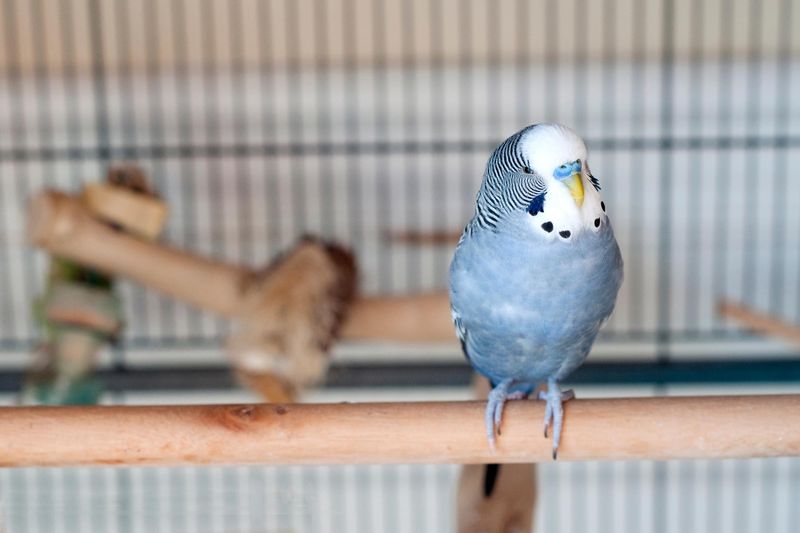
Budgerigars are relatively low maintenance, requiring a simple setup with clean water, seeds, and routine cage cleaning. Their care regime is straightforward, making them suitable for first-time bird owners.
Lovebirds, however, demand more engagement. They need ample space, mental stimulation, and a varied diet to thrive. Their care involves more time and resources but rewards with a rich, interactive experience.
These care requirement differences can influence the decision-making process for prospective owners, guiding them to choose a bird that aligns with their lifestyle commitment.
Breeding Habits
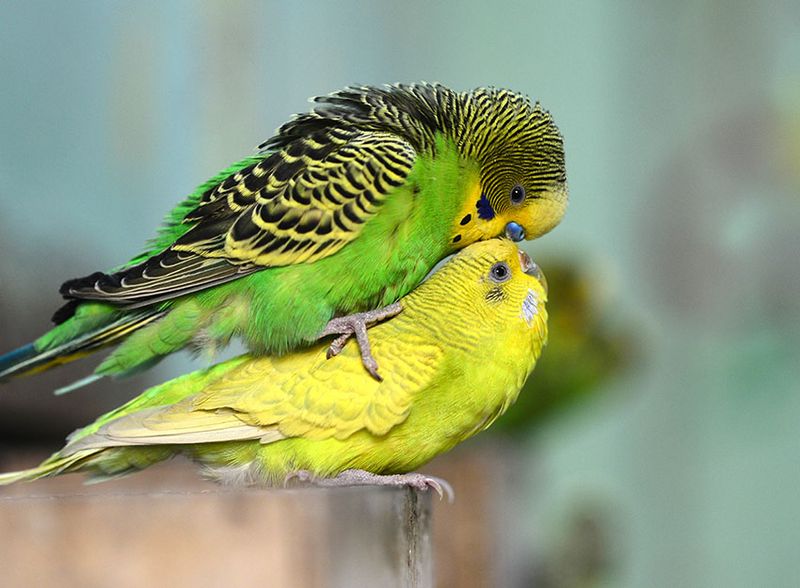
Breeding habits differ markedly between these two birds. Budgerigars are prolific breeders, often breeding with ease under the right conditions. Their simplicity in nesting and raising chicks makes them accessible for amateur breeders.
In contrast, lovebirds require more specific conditions. They are known to be selective about nesting environments, needing carefully curated conditions to breed successfully.
For those interested in breeding, these differences highlight the varying levels of skill and preparation needed to successfully raise chicks from these charming birds.
Temperament and Interaction
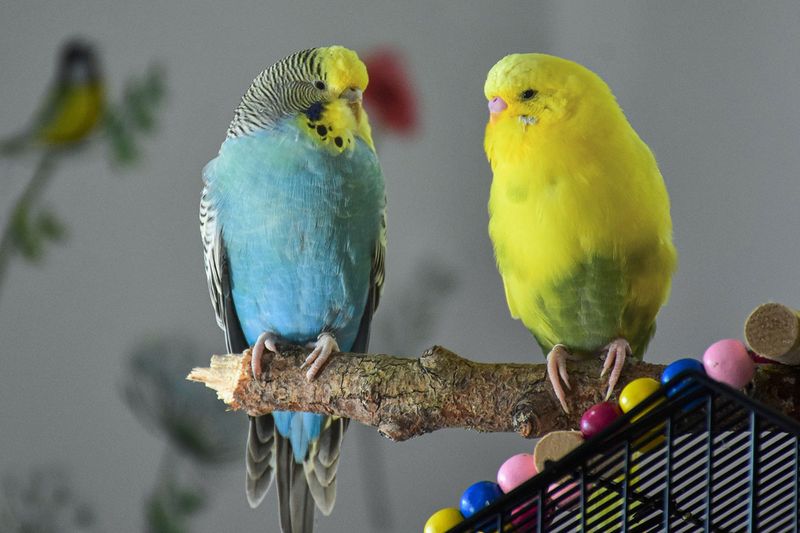
Budgerigars are known for their playful and curious nature. They enjoy interacting with people and toys, often displaying a lively and engaging demeanor that captures hearts.
Lovebirds, though affectionate, can be more reserved. They form deep attachments but may require time to warm up to new people. Their temperament is often described as passionate, reflecting their strong pair bonds.
These temperamental differences are key in determining the type of companion each bird can be, providing varied interaction experiences based on their unique personalities.
Housing Needs
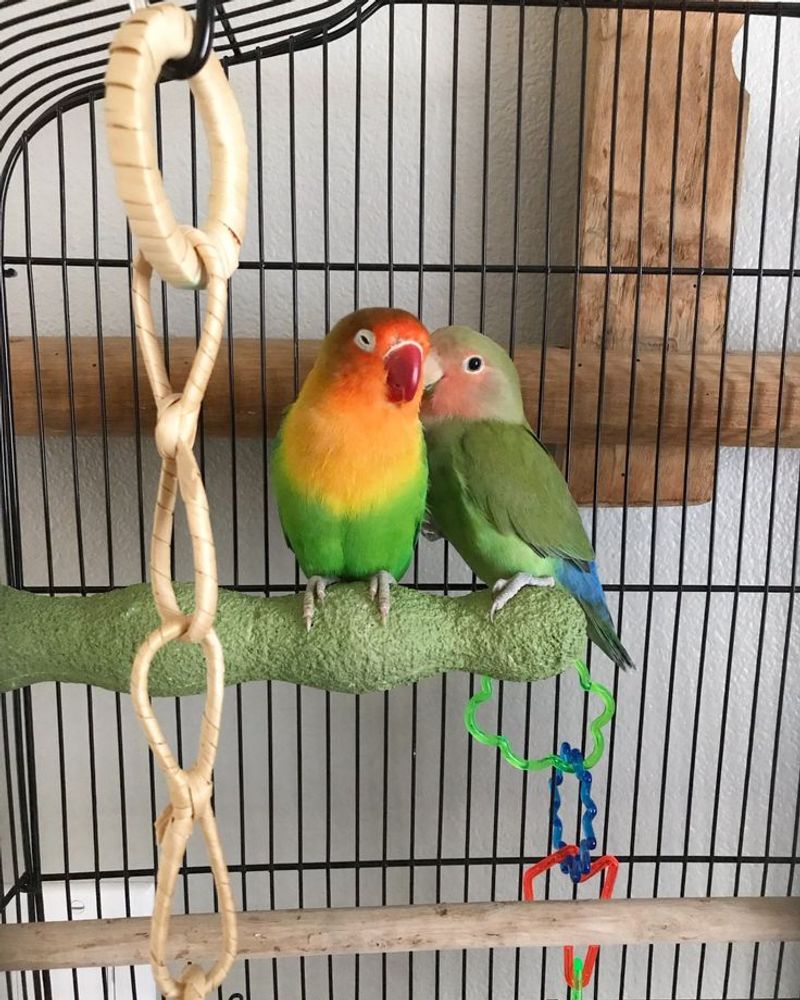
Budgerigars thrive in spacious environments, benefiting from larger cages that allow them to fly and explore. Their housing needs are straightforward, focusing on space and cleanliness.
Lovebirds, on the other hand, require more than just space. They thrive in enriched environments with toys and activities to keep them mentally engaged. Their housing needs reflect their active nature and desire for stimulation.
Understanding these housing needs is essential for ensuring both birds live comfortably, offering environments that cater to their natural behaviors and preferences.
Playfulness and Toys
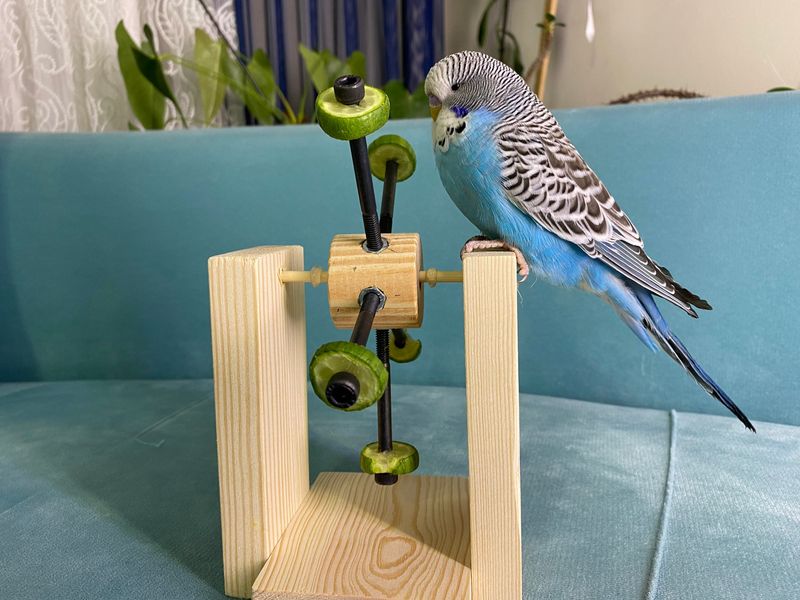
Budgerigars are inherently playful, often seen interacting with mirrors and bells. Their love for simple toys makes them easy to entertain, providing endless amusement with basic playthings.
Lovebirds, conversely, require more complex toys and puzzles. Their inquisitive nature compels them to explore and problem-solve, engaging deeply with interactive toys.
These differences in playfulness and toy preferences highlight the diverse ways each bird engages with their environment, offering unique opportunities for interaction and entertainment.
Noise Levels
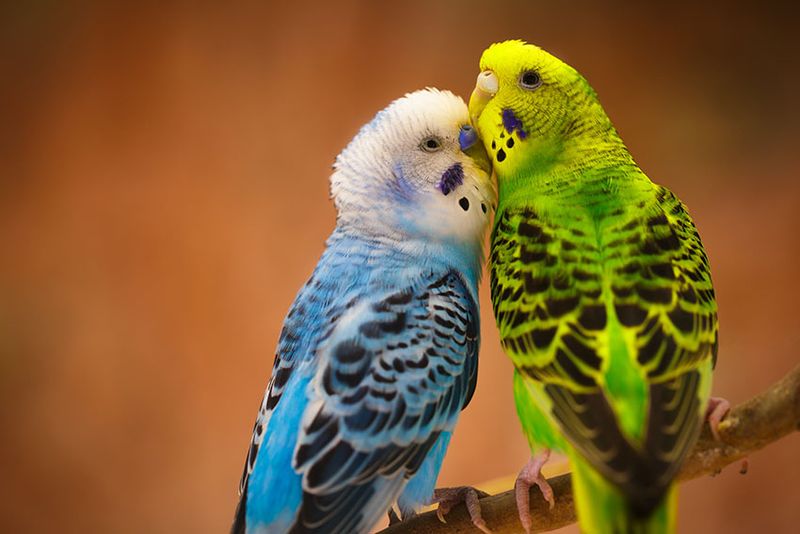
Budgerigars, with their chattering songs and potential for mimicking speech, can be quite vocal. Their noise is often melodic, filling spaces with cheerful sounds.
Lovebirds, while not as talkative, can be loud. Their calls are more about volume than variety, sometimes surprising with their intensity.
Understanding these noise levels is crucial for those living in shared spaces or apartments, as it influences the suitability of each bird in different living environments, balancing vocal charm with potential disturbance.

